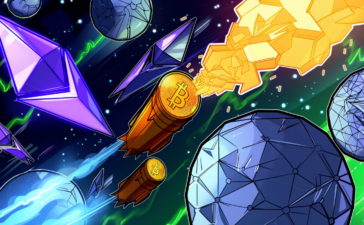The AI-driven surge in stocks over the past year has raised questions about whether the market is in a bubble that is close to popping. For now, Wall Street strategists say the answer is no.
Many see comparisons of the current market rally to the dot-com bubble of the early 2000s or the meme stock mania in 2021 as premature. For starters, the current rally hasn’t been as obscene as others that coincided with the late stages of previous bubbles.
Stocks have rallied about 31% over the past three years. This is largely in line with average returns over a three-year time period and a far cry from the 98% three-year return seen at the start of 2000 or the 90% return seen at the end of 2021.
“We are not yet close to those levels, even as the market sits at all-time highs,” Baird investment strategy analyst Ross Mayfield wrote in a note to clients on Monday night. “There’s room to run.”
The underlying dynamics of the current rally don’t indicate the market has reached levels of euphoria on par with past bubbles either.
Using an enterprise value-to-sales ratio, Goldman Sachs analyzed the percentage of US stocks that have what the firm considers to be high valuations. The results showed that highly valued stocks currently account for 24% of the US equity market, lower than the 28% seen in 2021 and the 35% during the tech bubble of the late 90s.
Notably, there are also far fewer overvalued companies contributing to this recent run.
“If we look at the number of companies that are trading at very elevated multiples, that looks even less extreme relative to history,” Goldman Sachs equity analyst Ben Snider told Yahoo Finance. “So effectively, as we all know, there are a small number today of very large companies trading at elevated multiples, rather than what we saw in 2021, just a couple years ago, where there seemed to be widespread euphoria priced across the market.”
He acknowledged the lack of breadth in the current rally resembles that of the dot-com bubble. But Snider believes the crucial difference this time around is that moves higher in many of the large-cap tech stocks have been in line with earnings growth. Snider says that was not the case with market darlings like Nortel Networks in the dot-com bubble.
For instance, AI leader Nvidia’s (NVDA) stock has soared more than 255% over the past year. But its earnings have also kept pace: In the past fiscal year, which the company just finished reporting in late February, earnings grew 288%.
By comparison, in 1999 Nortel stock rose more than 320%. Adjusted earnings per share grew about 94% that year, per Bloomberg data. Nortel eventually filed for bankruptcy and is no longer a publicly traded entity.
“Our view is that this is not a bubble and the simplest explanation is that prices and the valuations of these megacap stocks, whether you’re calling them the Mag Seven or others, have really been driven by a combination of superior growth and strong balance sheets, and both of those qualities historically have warranted premium valuations,” Snider said.
Capital Economics market economist John Higgins has a slightly different view: He thinks the market is in a bubble, but just in the early stages of one. Higgins noted that there has yet to be a run-up in margin debt, or money investors borrowing to buy stocks, alongside equities’ upward surge.


This was the case in the moments of market exuberance seen in both the dot-com bubble and the 2021 rally, and often means the bubble can “end in tears” as leverage is quickly unwound by a drop in the market and ensuing spree of forced selling.
“The conclusion to draw simply from that alone would be we’re not in the late stages of a bubble, at least not based on the way that rising margin debt has typically accompanied the next stages of prior bubbles,” Higgins said.
Higgins thinks the S&P 500 (^GSPC) will rise to 6,500 by the end of 2025 as tech valuations reach closer to levels seen during the dot-com bubble. But even that, Higgins notes, is merely an estimation based on how far investors were willing to stretch the bubble in the early 2000s. This time around could be different.
“Nobody knows how big a bubble will get before it bursts, how long it will take to inflate, or what, in fact, might cause it ultimately to burst,” Higgins said.


Josh Schafer is a reporter for Yahoo Finance. Follow him on X @_joshschafer.
Click here for the latest stock market news and in-depth analysis, including events that move stocks
Read the latest financial and business news from Yahoo Finance

















